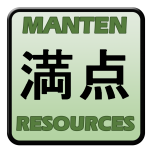The impact of social media on our students’ view of themselves is a concern for us as educators. We want them to leave school with a strong sense of self and good values that will guide them through life. This can seem like an impossible goal at times though when we watch them obsess over the perfect selfie shot rather than enjoy the actual moment.
One day I was visiting my mother in hospital and I had stopped at the hospital café. Two young women in their early 20s were discussing how they “needed” to get botox again in their lips. They were young, beautiful and healthy women sitting in a building where all around them people were fighting for their lives. Such preoccupation with looks and a curated image on-line is a struggle that my generation did not have to go through. I wished I could interrupt and urge the girls to concern themselves less with their presentation, and more on their personal achievements in life. What did they hope to do with their lives? What did they hope to see, experience, achieve, give back?
Values are a key to such personal understanding, yet we spend little time at school or as adults considering what these mean for each of us. Sometimes it is only when we hear of the challenges and achievements of others over adversity that we glimpse what this could mean for us individually. Role models can enable others to believe in their own potential. Public awards such as the Australian of the Year acknowledge these positive role models and redress the imbalance presented by the media and social media platforms
Fact: In 2014, there were 14 Aboriginal finalists for the Australian of the Year Awards. By 2015, one in 7 Australian of the Year recipients were Aboriginal.
Source: Famous Aboriginal people, activists & role models – Creative Spirits, retrieved from https://www.creativespirits.info/aboriginalculture/people/famous-aboriginal-people-role-models#toc1
This website has some fabulous information about Aboriginal and Torres Strait Islander perspectives. It reminds us that the media does not always present a balanced view of the world and that stereotypes are developed through such biased representation. This inspired me to wonder, how can I improve value awareness and knowledge of positive Aboriginal and Torres Strait Islander role models whilst meeting the demands of the Japanese language syllabus?
The Stage 5 Values assessment task
This pitch for this task-based learning sequence and assessment is:
You are part of a marketing team that handles campaigns for multinational corporations. Your new client is a Japanese company looking to expand its business. Your job is to recruit possible ambassadors for the company that are in synch with their core values of ゆうき、がまん、きょうりょく、and どりょく.
Your brief is to find positive role models that represent at least two of the core values. You need to present background information on 4 possible candidates. At least two candidates must be Japanese.
The task takes students through identifying their own values, exploring the profiles and life experience timelines of famous Aboriginal and Torres Strait Islander role models. They will develop vocabulary resources related to these profiles, use the resources to read Japanese texts about these people and analyse how these people match the identified values of international companies such as Honda. Students will then focus on the identified Japanese values of ゆうき、がまん、きょうりょく、and どりょく to create a mixed media presentation endorsing 4 possible candidates. This task focuses on reading, writing and speaking skills and includes formative and summative assessment opportunities throughout.
If you are interested in such a task, it is available from Manten Resources for $70. Simply email jblog1help@gmail.com to order.
Good luck with your values journey!
